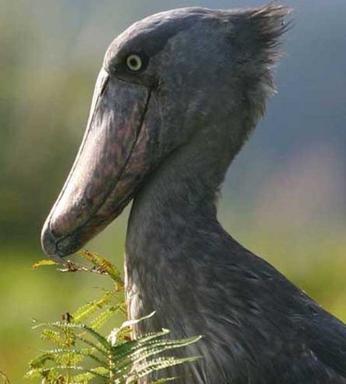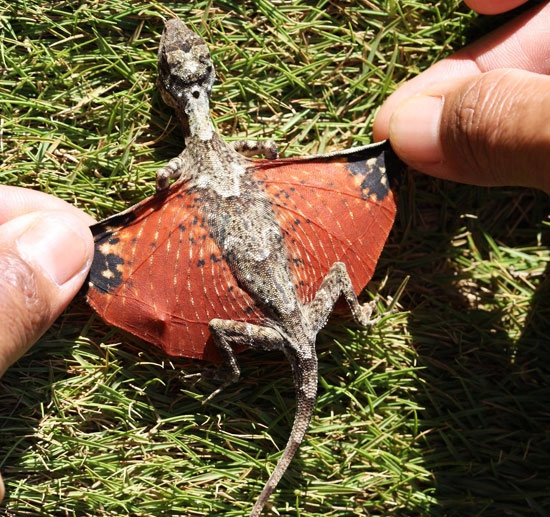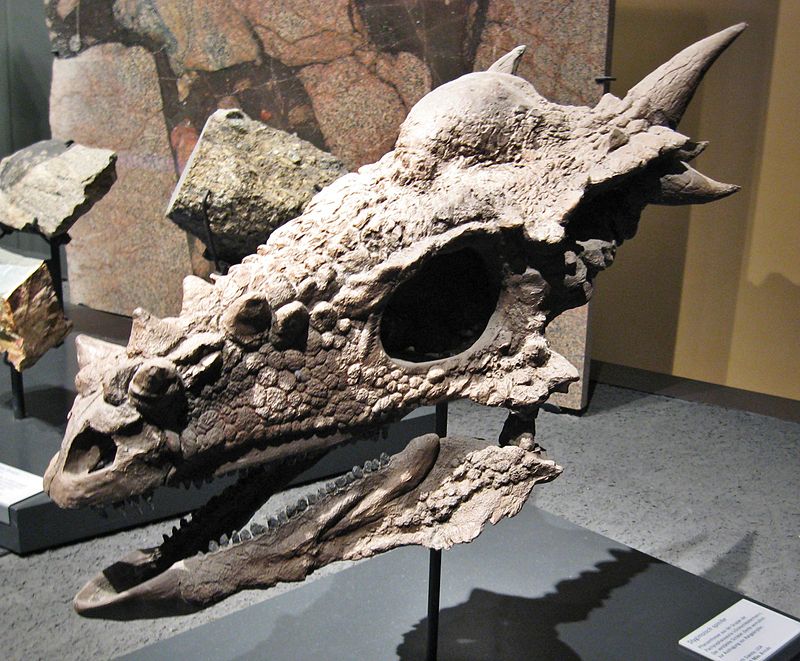It looks like you're using an Ad Blocker.
Please white-list or disable AboveTopSecret.com in your ad-blocking tool.
Thank you.
Some features of ATS will be disabled while you continue to use an ad-blocker.
share:

A) Whole-mount alcian blue staining confirms the ulnare is the first carpal formed in avian embryos, distal to the ulna. Thereafter, a distal carpal 3 (referred to as “element x” in previous embryological descriptions) is formed distal to the ulnare, coexisting with it. Finally, the ulnare disappears, whereas dc3 persists
Although we now appreciate that birds evolved from a branch of the dinosaur family tree, a crucial adaptation for flight has continued to puzzle evolutionary biologists. During the millions of years that elapsed, wrists went from straight to bent and hyperflexible, allowing birds to fold their wings neatly against their bodies when not flying.
How this happened has been the subject of much debate, with substantial disagreement between developmental biologists, who study how the wings of modern birds develop in the growing embryo, and palaeontologists who study the bones of dinosaurs and early birds. A resolution to this impasse is now provided by an exciting new study publishing on September 30 in PLOS Biology
Underlying this striking evolutionary transformation change is a halving in the number of wrist bones, but developmental biologists and palaeontologists have different names for most of them, and seldom agree on the correspondence between specific dinosaur bones and those of their bird descendants. Indeed, each field has radically different data sources, methods, and research objectives, talking little to each other.
The critical advance made in the new study involved combining these two strands of research. Using an interdisciplinary approach, the lab run by Alexander Vargas at the University of Chile has re-examined fossils stored at several museum collections, while at the same time collecting new developmental data from seven different species of modern birds. Joao Botelho, a Brazilian student in Vargas' lab, developed a revolutionary new technique that allows him to study specific proteins in 3D embryonic skeletons. By combining these data from both fossils and embryos, the research team has made a major step forward in clarifying how the bird wrist evolved.
The new data obtained has revealed the first developmental evidence that the bird semilunate was formed by the fusion of the two dinosaur bones. Another bone -- the pisiform -- was lost in bird-like dinosaurs, but then re-acquired in the early evolution of birds, probably as an adaptation for flight, where it allows transmission of force on the downstroke while restricting flexibility on the upstroke. Combined, the fossil and developmental data provide a compelling scenario for a rare case of evolutionary reversal.
This study also settled the identity of the other two bones of the bird wrist, which were commonly misidentified in both fields.
Another added bonus of this study, which doesn't have to do with the study itself just how it was done, emphasizes the downsides of not integrating all data sources, and reveals a situation perhaps akin to that of astronomy and experimental physics in the pursuit of cosmology: Together, palaeontology and development can come much closer to telling the whole story of evolution . This integrative approach resolves previous disparities that have challenged the support for the dinosaur-bird link and reveals previously undetected processes, including loss of bones, fusion of bones, and re-evolution of a transiently lost bone.
I hope this helps answer some questions for people.
How dinosaur arms turned into bird wings
edit on 9 30 2014 by Sabiduria because: code stuff
edit on 9 30 2014 by Sabiduria because: code stuff
originally posted by: Sabiduria
a reply to: Aleister
Thanks
I love dragons and I have to wonder if at one point they did exist. Maybe not the flying ones or as big as we depict them but they could have been a creature at one point on this Earth.
I also think that the mythical Cockatrice is a good contender for Oviraptor that may have still been around, maybe.
It's funny when they say dinosaurs are extinct, when in fact they are everywhere around us.


a reply to: weirdguy
There could have been large reptilian creatures that some ancient civilization called dragon which meant something different that it does today. I'm not saying it has to be monstrously huge either, that's probably been grossly exaggerated like a lot of things. After all the Komodo Dragon isn't technically a dragon, it's just a large species of lizard.
dragon (n.)
early 13c., from Old French dragon, from Latin draconem (nominative draco) "huge serpent, dragon," from Greek drakon (genitive drakontos) "serpent, giant seafish," Dragon Etymology
When you take into consideration the etymology of the word and think of ancient civilizations farther back than the Greeks, it would make sense for a large reptile or even eel type creature to be twisted into the dragon we know today. Look at the game 'Telephone' you start of saying one thing but after it gets passed around to a bunch of different people, what ends up being said is different than what you started off with. Stories over time get slowly changed and this could be the same for the dragon.
There could have been large reptilian creatures that some ancient civilization called dragon which meant something different that it does today. I'm not saying it has to be monstrously huge either, that's probably been grossly exaggerated like a lot of things. After all the Komodo Dragon isn't technically a dragon, it's just a large species of lizard.
dragon (n.)
early 13c., from Old French dragon, from Latin draconem (nominative draco) "huge serpent, dragon," from Greek drakon (genitive drakontos) "serpent, giant seafish," Dragon Etymology
When you take into consideration the etymology of the word and think of ancient civilizations farther back than the Greeks, it would make sense for a large reptile or even eel type creature to be twisted into the dragon we know today. Look at the game 'Telephone' you start of saying one thing but after it gets passed around to a bunch of different people, what ends up being said is different than what you started off with. Stories over time get slowly changed and this could be the same for the dragon.
a reply to: Sabiduria

There you go.. not too hard to imagine.
originally posted by: Sabiduria
a reply to: Aleister
Thanks
I love dragons and I have to wonder if at one point they did exist. Maybe not the flying ones or as big as we depict them but they could have been a creature at one point on this Earth.

There you go.. not too hard to imagine.
originally posted by: nOraKat
a reply to: Sabiduria
originally posted by: Sabiduria
a reply to: Aleister
Thanks
I love dragons and I have to wonder if at one point they did exist. Maybe not the flying ones or as big as we depict them but they could have been a creature at one point on this Earth.
There you go.. not too hard to imagine.
I was hoping someone had this photo. It sure makes you wonder of possibilities. I want one! LOL
There will come a time when we realize that the extinction of the dinosaurs was more a transition of the dinosaurs. This obviously goes hand in hand
with a realization that several mythical beasts involve humans observing the last remnants of animals that were thought to no longer exist.
The OP points out interdisciplinary needs. I would not see a reason to not include cryptozoology in this mix.
Ancient man was not foolish, nor was he full of lies. He was observant, witty, and knowledgable about the world he lived in. Myths are just stories that were embellished to some degree. In the case of dragons....they are pervasive in human culture. Some stories could actually derive from deep antiquity, in the earliest days of the homo genus. We know there were terrifying, large birds with arms
Terror Birds
Now add a longer tail.....remove the feathers and make them a scaly green.....
we don't believe ancients lived around dinosaurs because the stories about big, terrifying birds don't meet our green, scaly expectation. But look at those arms and hands
The OP points out interdisciplinary needs. I would not see a reason to not include cryptozoology in this mix.
Ancient man was not foolish, nor was he full of lies. He was observant, witty, and knowledgable about the world he lived in. Myths are just stories that were embellished to some degree. In the case of dragons....they are pervasive in human culture. Some stories could actually derive from deep antiquity, in the earliest days of the homo genus. We know there were terrifying, large birds with arms
Terror Birds
Now add a longer tail.....remove the feathers and make them a scaly green.....
we don't believe ancients lived around dinosaurs because the stories about big, terrifying birds don't meet our green, scaly expectation. But look at those arms and hands
edit on 10/1/2014 by bigfatfurrytexan because: (no reason given)
edit on 10/1/2014 by
bigfatfurrytexan because: (no reason given)
originally posted by: bigfatfurrytexan
We know there were terrifying, large birds with arms
Also many dinosaurs that were depicted without feathers are now known to have had feathers or feather-like plumage.
originally posted by: nOraKat
a reply to: Barcs
Balaeniceps rex
or 'Shoebill'
It get to an impressive size. Some 5 ft tall with a wingspan of over 8 ft.
I think they were asking about the lizard (could be wrong, though).
The lizard is Draco Sumatranus, and they only get to 3 or 4 inches long. But if they did grow to 5ft, with an 8ft wingspan, then I'd have to call it a dragon....
originally posted by: AdmireTheDistance
originally posted by: nOraKat
a reply to: Barcs
Balaeniceps rex
or 'Shoebill'
It get to an impressive size. Some 5 ft tall with a wingspan of over 8 ft.
I think they were asking about the lizard (could be wrong, though).
The lizard is Draco Sumatranus, and they only get to 3 or 4 inches long. But if they did grow to 5ft, with an 8ft wingspan, then I'd have to call it a dragon....
Yeah, that's what I was asking about. Thanks! Man, if those things grew to 5 feet long, I'd genuinely be afraid!
edit on 6-10-2014 by Barcs
because: (no reason given)
a reply to: Barcs
this is my thought on dragons.
i don't think anyone would really find them all that great. Just think....if a roach decides to take flight, people scatter. People tend to like lizards as much as they like bugs: morbid fascination at best, terror at worst. Now imagine a lizard that is big enough to eat you. Bigger than a komodo dragon, say (which is big enough to be terrifying as a land animal, if it took flight people would start wearing diapers).
Yeah. If ever there were dragons, good riddance.
this is my thought on dragons.
i don't think anyone would really find them all that great. Just think....if a roach decides to take flight, people scatter. People tend to like lizards as much as they like bugs: morbid fascination at best, terror at worst. Now imagine a lizard that is big enough to eat you. Bigger than a komodo dragon, say (which is big enough to be terrifying as a land animal, if it took flight people would start wearing diapers).
Yeah. If ever there were dragons, good riddance.
new topics
-
Dr. Demento
Music: 51 minutes ago -
The elephant in the room (wearing a hoodie)
US Political Madness: 57 minutes ago -
To become president, Zelensky had to learn Ukrainian
Political Conspiracies: 7 hours ago -
Green Grapes
General Chit Chat: 11 hours ago
top topics
-
Green Grapes
General Chit Chat: 11 hours ago, 6 flags -
To become president, Zelensky had to learn Ukrainian
Political Conspiracies: 7 hours ago, 5 flags -
Those Great Fresh Pet Commercials
Television: 16 hours ago, 3 flags -
The elephant in the room (wearing a hoodie)
US Political Madness: 57 minutes ago, 2 flags -
Dr. Demento
Music: 51 minutes ago, 0 flags
active topics
-
The elephant in the room (wearing a hoodie)
US Political Madness • 2 • : network dude -
Steering the Titantic from the Drydock.
Rant • 44 • : ufoorbhunter -
Los Angeles brush fires latest: 2 blazes threaten structures, prompt evacuations
Mainstream News • 121 • : Flyingclaydisk -
Dr. Demento
Music • 0 • : AlroyFarms -
Those Great Fresh Pet Commercials
Television • 5 • : CosmicFocus -
Planned Civil War In Britain May Be Triggered Soon
Social Issues and Civil Unrest • 23 • : AdultMaleHumanUK -
Those stupid GRAVITE commercials
Rant • 14 • : FlyersFan -
To become president, Zelensky had to learn Ukrainian
Political Conspiracies • 6 • : FlyersFan -
Green Grapes
General Chit Chat • 2 • : AlroyFarms -
Trump says ownership of Greenland 'is an absolute necessity'
Other Current Events • 66 • : bastion


